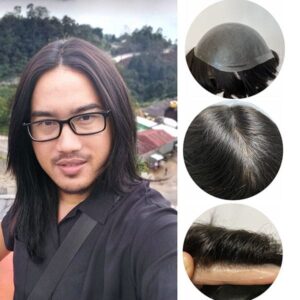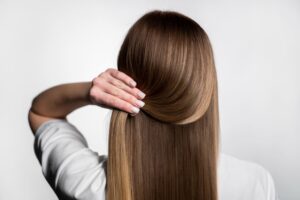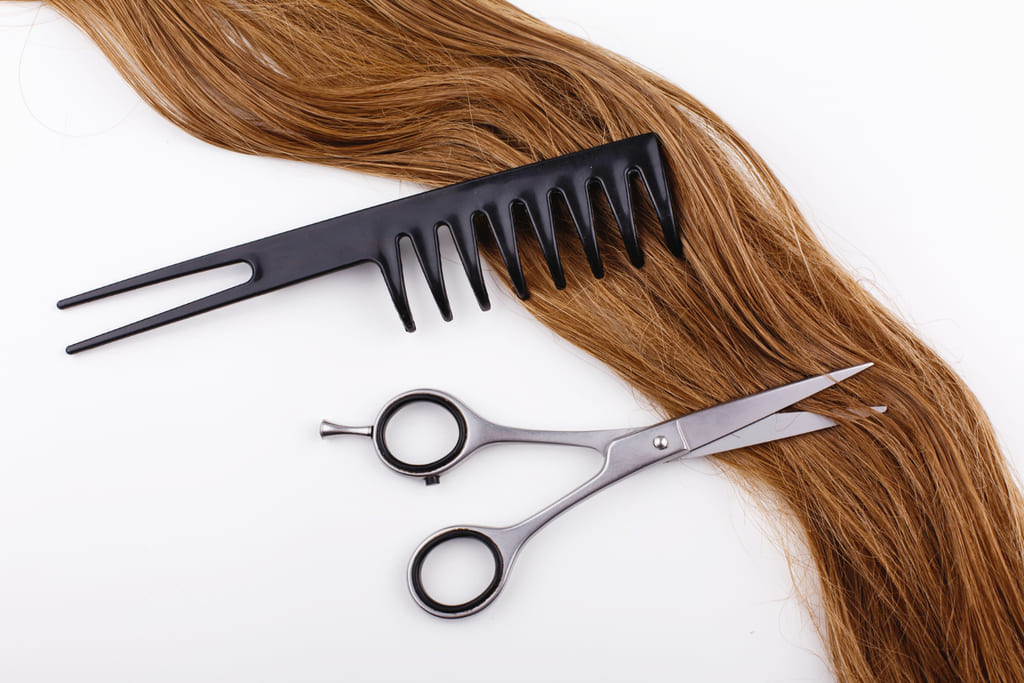
Hair Loss: Causes and Remedies
Have you ever seen our catalogue?
Why do we lose our hair? Hair loss (alopecia) affects all people. The American Academy of Dermatology has estimated that each person loses 50 to 100 hairs every day. The most feared seasons are spring and autumn. It is in these periods, in fact, that the most hair is lost.
The phenomenon affects men more than women. While in the former the loss mainly involves the frontal part and the temples, in women it affects the top (or crown) of the scalp.
Profuse hair loss creates a lot of discomfort for some people. What are the causes and, above all, what are the possible remedies? As we will see in this article, it is now possible to return to having thick hair as it once was thanks to advanced and tested hair prostheses. To find out more information about hair loss: causes and remedies, please continue reading the article.
Alopecia: what it is
Alopecia, androgenetic or aerated, is the main cause of hair loss. It affects 70% of men and 40% of women. It can be of an early type and manifest itself already around the age of 16, or late, after the age of 30.
In general, alopecia can involve the entire scalp or only part of it. Hair loss is not always irreversible. Much depends on the hair follicle. When this is atrophied, then it is not possible to regenerate the hair, but when the cavities are not damaged then it is a temporary alopecia also called non-cicatricial alopecia.
The first symptoms that hair loss is caused by alopecia is the itching sensation. The latter is given by the sebum which is produced in excess and causes clogging of the hair follicles.
There are 7 different types of baldness measured according to the Hamilton-Norwood scale. The scale starts from stage I, the first, which is the least severe baldness, that is, when alopecia is in an initial state, up to the last, stage VII, reached when baldness is almost total.
Alopecia manifests itself in various forms. Mainly thinning can occur:
On the top of the head
It is the most common form of male pattern baldness. The thinning is gradual and starts from the hairline on the forehead. This form of baldness is known as androgenetic alopecia.
In patches
Sometimes hair loss occurs irregularly. Some people may lose hair only in certain parts of the scalp. This condition can be a symptom of alopecia areata.
Other forms of alopecia
In addition to androgenetic or areata alopecia, there are other less common forms of alopecia but still present in some subjects.
- Traction: Hair loss is caused by an aesthetic treatment, by trauma or by hairstyles such as ponytails or braids.
- Cicatricial: when the hair follicles are missing due to burns, trauma or disease.
- Diffuse: also known as telogen effluvium, it mainly affects women, who suffer from copious hair loss after a shower and during the night.
Cause of hair loss

Hereditary factors are the main cause of hair loss, however a particular medical condition, hormonal changes and aging can also facilitate the phenomenon.
However, there are also other factors that can cause hair loss. The condition of stress and anxiety is frequent, for example given by:
- A mourning.
- A separation.
- The postpartum.
Other times it is the diet that causes progressive hair loss. In particular, hair tends to fall more easily in those who take insufficient amounts of:
- Proteins.
- Fruits and vegetables.
- Legumes.
- Eggs.
As far as nutrition is concerned, it is important to take the right amounts of vitamins:
- A: helps the immune system and keeps the hair young.
- B1 and B2: give energy and shine to the hair.
- C: helps hair regrowth.
- D: it can counteract some forms of alopecia.
- And: thanks to the antioxidant functions it helps to keep the hair healthy.
Finally, hair loss can be caused by hyper or hypothyroidism or by the excessive use of bleaches, lighteners, dyes, hairdryers and straighteners.
Androgenetic alopecia
As anticipated, androgenetic alopecia is a disease that causes progressive hair loss.
It is a condition that can also occur in very young people, especially males. In the latter, the fall involves the vertex of the head and the frontotemporal region. In women, on the other hand, hair loss mainly affects the central part.
Androgenetic alopecia is one of the main causes that pushes people to consult a dermatologist. Medically, the disease occurs due to a miniaturization of the hair follicles.
The studies conducted and the technological progress in the genetic, molecular and pathophysiological fields, today not only make the causes clear but also offer useful remedies to what for many people is a real problem causing discomfort, relational difficulties and anxiety.
In fact, several studies confirm that baldness creates psychological discomfort, such as to lead to continuous dissatisfaction with one’s physical appearance and constant concern that hair loss will not stop.
In men
It is necessary to distinguish androgenetic alopecia that affects men from that of women. From the available data we learn that alopecia affects about 30% of Caucasian men aged around 30. The percentage rises to 40% upon reaching the age of 40 and 50% after the age of 50. The people least affected by androgenetic alopecia are Asians.
In women
In women, on the other hand, the percentage of subjects affected by androgenetic alopecia is lower. The percentages in Caucasian populations are around 20%, a percentage which is reduced to 6% in women of oriental origin.
As with men, women with advancing age also have a greater chance of suffering from female alopecia. Clinically there are some differences highlighted in some specific studies including: Incidence of female androgenetic alopecia.
Alopecia areata
Alopecia areata occurs due to the immune system. The latter acts on the hair follicles causing hair loss.
This type of alopecia occurs on the hair present but can also affect facial hair. It is recognizable because the hair falls out in quantity causing some patches with the size of a coin.
Alopecia areata also varies from person to person. It can occur around the age of adolescence or later, once you reach the age of 30. Some suffer from it throughout their lives, others only in certain moments.
Also in this case the hereditary component plays a decisive role. However, stress or some illnesses can also be a cause. In particular, people with some autoimmune diseases are particularly affected:
- Psoriasis.
- Diseases of the thyroid gland.
- Some allergies.
Alopecia areata in turn is divided, and can manifest itself in three different forms. Patchy alopecia is the most common, but hair loss can also be all over the scalp (total alopecia areata) or in extreme cases involve all body hair (universal alopecia areata).
When to see a doctor?
When you notice excessive hair loss, it is a good idea to first consult your doctor and only then choose one or more remedies.

The specific person to contact is the dermatologist. This professional, after identifying the causes, could submit the client to a trichological examination and, using a videodermatoscope, assess the condition of the hair and scalp.
The visit allows the dermatologist to identify the causes of the problem and then to suggest a therapy.
It is a good idea to undergo a trichological examination at least once in your life, while it is an absolutely recommended step as soon as you notice abnormal hair loss.
The visit is painless and allows the dermatologist to understand the true nature of the problem. Sometimes he may ask the client to undergo further tests by inviting him to carry out blood tests.
In general, if the cause identified is hormonal, then the doctor prescribes a drug treatment, otherwise he may believe that the problem can be solved by changing the diet and in this case he could suggest a specific food treatment.
Hair loss remedies
Once the causes have been established, all that remains is to find a remedy for hair loss. Alopecia is hardly a problem that is resolved over time but can be treated in numerous ways.
There are not many solutions to get your hair back. As we will see, the main ones consist of either applying a hair prosthesis or undergoing the actual transplant.
Let’s look at these two solutions in detail and why the prosthesis is a preferred option.
1. Hair implants
In the case of irreversible alopecia, one of the most popular and least invasive solutions adopted by a growing number of people, men and women, is that of a hair prosthesis or skin patch. It is one of the fastest ways to permanently solve the hair loss problem.
The prosthesis can be applied in all areas where the hair is absent or thinned. Skin patches can be considered as the evolution of wigs. The final result, however, is by no means comparable.
The best prostheses today, marketed by NewLacecu, are extremely realistic, comfortable to wear, resistant and difficult to recognize even by an attentive eye.
2. Hair transplant
Alternatively, you can think of a hair transplant, an operation that however has multiple contraindications. As highlighted in the dedicated article, opting for a hair transplant means undergoing an invasive surgery.
Furthermore, it is not a remedy applicable to all types of alopecia, without considering the different risks that each surgical operation entails.
3. Tricopigmentation
A third possibility not free from various disadvantages is given by tricopigmentation. It is a technique used to mask baldness feasible both in completely bald subjects and by those suffering from partial baldness.
The technique consists in inoculating a small amount of pigment into the scalp. Doing so creates a visual effect that masks baldness, creating the illusion of the presence of hair even in areas where it is not present.
The technique, however, does not allow you to alter your look, moreover the pigments are semi-permanent and it is not possible to use the technique in case you suffer from alopecia areata.

Alopecia remedies: the importance of prevention
In addition to the two remedies mentioned in the previous paragraph, it is possible to contain hair loss using various methods. Neither of these is a permanent solution; however, they can slow hair loss and keep the hair and scalp in good condition.
Before any treatment it is preferable to ask your doctor for a consultation.
1. Anti thinning shampoo
There are numerous anti thinning shampoos on the market. These products tend to strengthen the hair, sometimes making it appear thicker. There is no shortage of vitamins and amino acids necessary to keep the scalp healthy.
2. Multivitamins
As highlighted in the previous paragraphs, with or without a doctor’s prescription, it is possible to try some multivitamins thus compensating for a possible lack of iron, zinc or folic acid, three components useful for promoting hair growth.
3. Biotin
Staying in the area of vitamins, your doctor may recommend that you try vitamin B-7 (or biotin), which occurs naturally in nuts or lentils, for example. Again, you could benefit from stronger and healthier hair.
4. Essential oils
By going to a well-stocked pharmacy you can also find some essential oils that promise to promote hair regrowth. The scientific literature on the subject has not yet provided a unanimous opinion on the effectiveness of these products. In any case, it seems that lavender, rosemary and thyme oil are beneficial for the health of the hair.
5. Aloe vera compress
One last way to prevent hair loss is to apply an aloe vera pack on the hair before shampooing. Thanks to its moisturizing and emollient properties, aloe vera helps keep the hair healthy.
Hair loss: the conclusions
In this article, all the possible causes of alopecia have been highlighted. Hair loss can be countered with specific products, some even natural, but in most cases it can never be stopped. For these reasons, those who want to return to having thick hair can think of different solutions.
In light of the pros and cons analyzed, choosing a hair prosthesis is the choice that collects the most positive consensus: a definitive solution, not at all invasive, capable of solving what is a real problem for many.

Xiufei Wu
Xiufei Wu is an expert in hair restoration and has been working in this field for more than 20 years. She has an engineering degree from Qingdao University of Science and Technology with honors (1998). In the year 2000 he began working on the creation and commercialization of hair prostheses and wigs and then in 2005 he founded his personal company New lacecu wig co, which today has hundreds of companies (hairdressers and wig shops) among its clients and thousands of private customers. She today is considered one of the leading experts in China in the manufacture and marketing of hair prostheses and wigs.
Lascia un commento
About us
NewLacecu is an italian owned business located in China. Launched in 1995, we have been committed to providing our customers with the best lace wig and hair pieces at affordable prices. All our products are handmade with the highest quality human hair, 100% certified.
Our mission is to bring our customers the highest quality in human hair replacement systems. We only use the best materials in the market and we ensure quality control by constantly developing and using strict methods at every single step of hair pieces manufacture.





